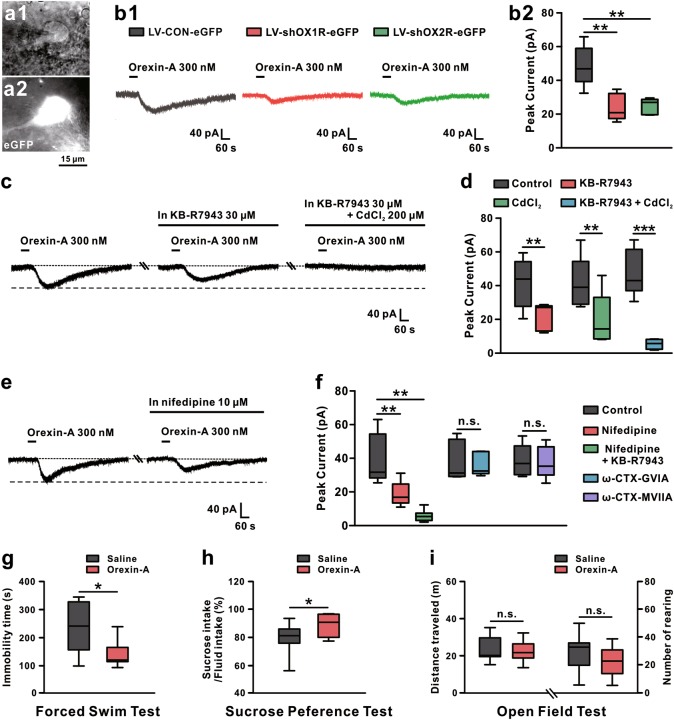Fig. 3.
The receptor and ionic mechanisms and behavioral effects of orexin-induced excitation on VP neurons. a1–a2 Based on infrared differential interference contrast and fluorescence images, lentivirus-infected eGFP-positive VP neurons with diameters around 15 μm were recorded. b1 Knockdown of OX1R (n = 5) or OX2R (n = 6) significantly reduced the orexin-A-induced inward current (n = 6) on VP neurons. b2 Group data of the tested VP neurons. c KB-R7943, a selective blocker of NCX (n = 5), partly blocked the orexin-A-elicited inward current, and combined application of KB-R7943 and CdCl2 totally blocked the current (n = 6). d Group data of the tested VP neurons. e Nifedipine, a selective L-type Ca2+ channel blocker (n = 6), partially inhibited the orexin-A-induced inward current. f Group data of the tested VP neurons. g–i Microinjection of orexin-A into VP decreased immobility time in forced swim test (n = 11) (g) and increased sucrose preference (n = 11) (h), but did not influence distance traveled (n = 11) and number of rearing (n = 11) in the open field (i). Control in b, d, f refers to orexin-A treatment. Data are represented as median (horizontal bar) with 25th–75th (box) and 10th–90th (whiskers) percentiles; n.s. indicates not significant and *P < 0.05, **P < 0.01, ***P < 0.001, by one-way ANOVA (b) followed by Bonferroni-corrected t test, two tailed paired (d, f) or unpaired t-test (g–i)

